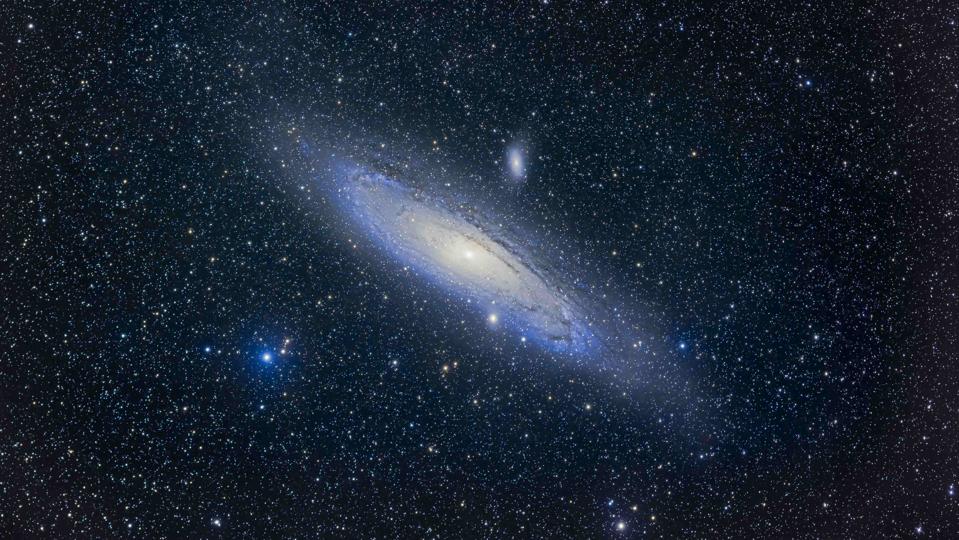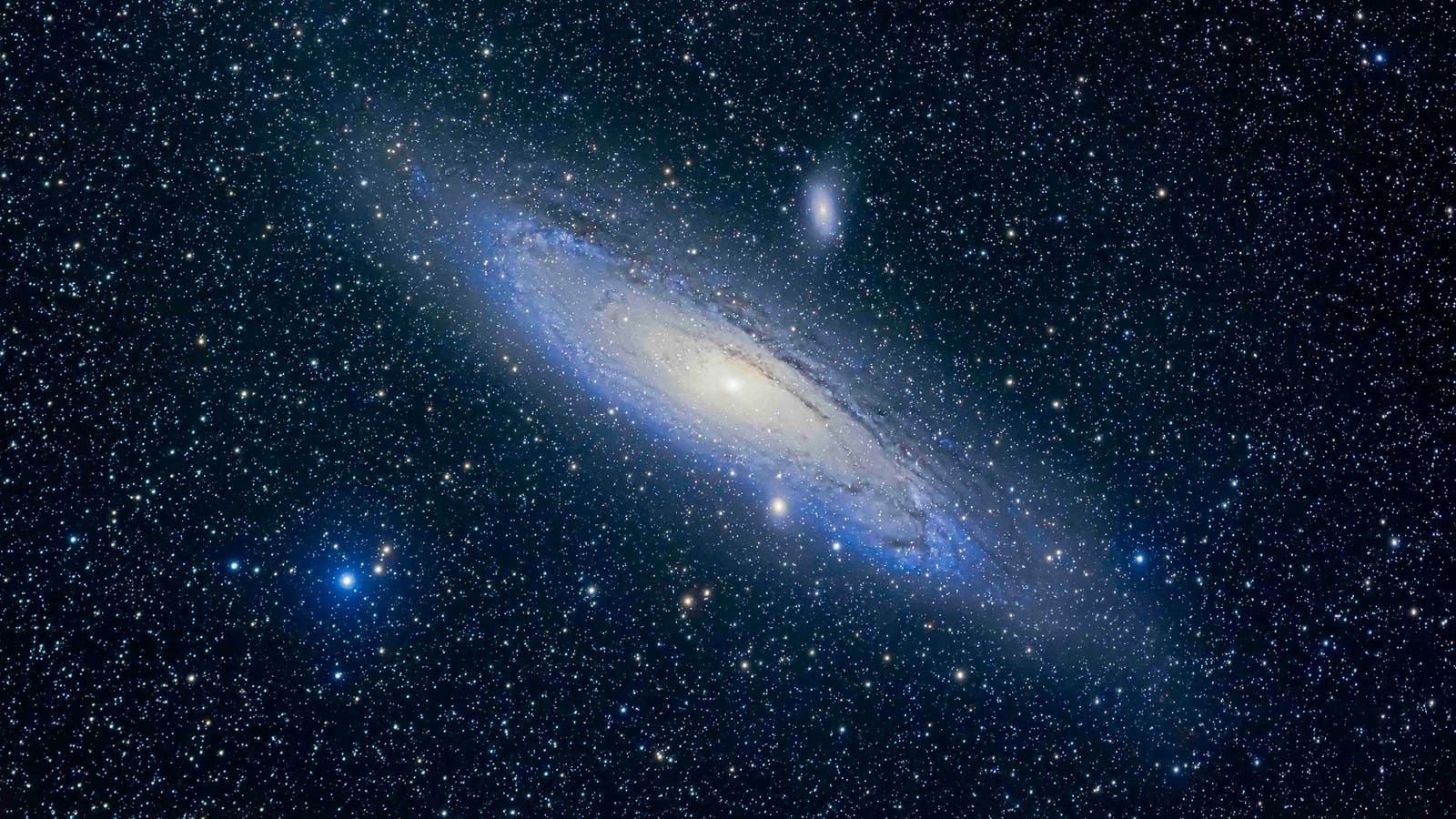
M31, the Andromeda Galaxy, is one of the most spectacular objects in the night sky. (Photo by: Alan Dyer/VW Pics/Universal Images Group via Getty Images)
VW Pics/Universal Images Group via Getty Images
Show any interest in the night sky, and it’s almost certain that someone who loves you will buy you a cheap telescope to look at distant galaxies. However, point a telescope at the Andromeda Galaxy — also called Messier 31 or M31 — and you’ll see … not much. The closest major galaxy to the Milky Way looks its best not in a telescope, but — like many objects — in binoculars, and it can even be glimpsed with the naked eye.
Observe the Andromeda galaxy and you’re looking at the light from 2.5 million light-years ago — light that left when the first, distant ancestors of humans were beginning to use tools in Africa. It’s among the farthest objects you can see with the naked eye.
Here’s everything you need to know to find the Andromeda Galaxy in the Northern Hemisphere’s night sky this fall.
ForbesThe Night Sky In September 2025: Two Eclipses, Labor Day Aurora And SaturnBy Jamie CarterAndromeda Galaxy: When and Where to Look
September and October are the best months to see Andromeda. From mid-latitudes in the Northern Hemisphere, the galaxy rises high enough in the east-northeastern sky after nightfall to make it an easy target. By late evening, it climbs high in the sky, crossing near overhead, where skies are darkest and air turbulence is at its minimum. So you can locate it early in the evening, then observe it at its best as it climbs higher.
The best time of the month to look for Andromeda is the week between the last quarter moon and the new moon. This month, the last quarter moon was on Sept. 14 and the new moon is on Sept. 21. The time is now!
Andromeda Galaxy: How To Find It And What You’ll See
The key to finding M31 isn’t to look for the sprawling constellation of Andromeda, but two others that it-s between — Cassiopeia and Pegasus. Here’s how to find it:
Look for Cassiopeia high in the northeast. It will be a W-shape. Imagine the ‘V’ in the W-shape with the star Shedar at its base. Draw a line through Shedar — it points toward the Andromeda Galaxy. Find the Great Square of Pegasus, a vast shape of four stars in the eastern sky. From its top left star, Alperatz, go two bright stars left and look slightly above for the Andromeda galaxy.Repeat these star-hops until you zero in on where Andromeda is.
Object Of The Week: The Andromeda Galaxy
Stellarium/Jamie CarterAndromeda Galaxy: Observing Tips
Can’t see it? Your sky is not dark enough — so use binoculars. When you’ve found a milky patch of stars, you’ve got it. Observe it for a while and you’ll notice a brighter core and extended oval shape — particularly if you use the averted vision technique, which means using your peripheral vision to best appreciate brightness (your direct vision sees detail, not brightness). Simply put, look to the side of Andromeda and you’ll see more that if you look straight at it.
Light pollution is the greatest obstacle to seeing this incredible galaxy. Andromeda is a faint, elongated glow, and its visibility is hugely affected by city lights and urban glow — especially in recent years as LED lighting has become widespread. The cost of all that cheap, always-on lighting is that you now need to travel to a Dark Sky Place — or consult a light pollution map — to see what our ancestors would have seen with their naked eye. It will also help if you hold your binoculars steady and use a lawn chair that allows you to lean back.
What’s Next In The Night Sky
If you’re heading outside for Andromeda this month, keep an eye out for four more sky highlights: a planet parade, Saturn at its brightest in 2025, and the September equinox (Sept. 22). The latter ushers in longer nights and may mean an uptick in Northern Lights displays.
Wishing you clear skies and wide eyes.

